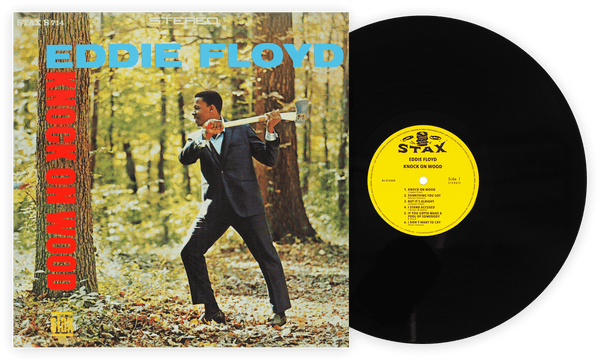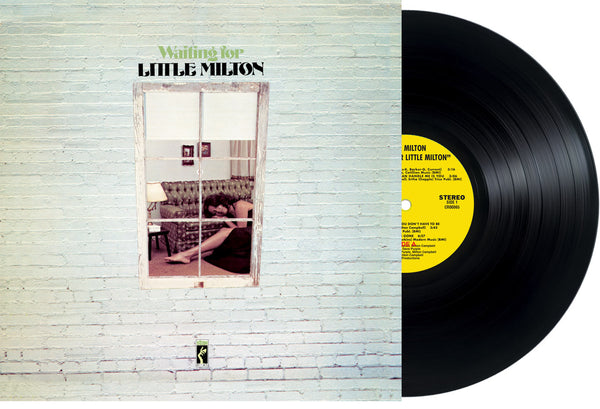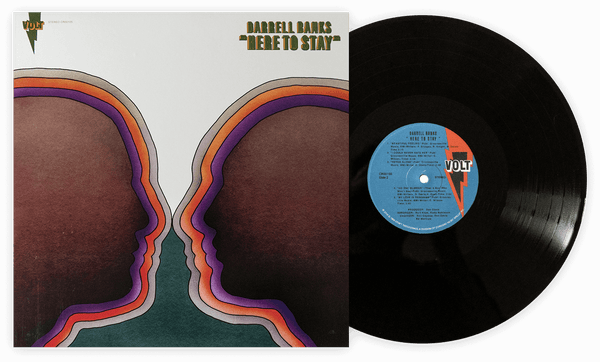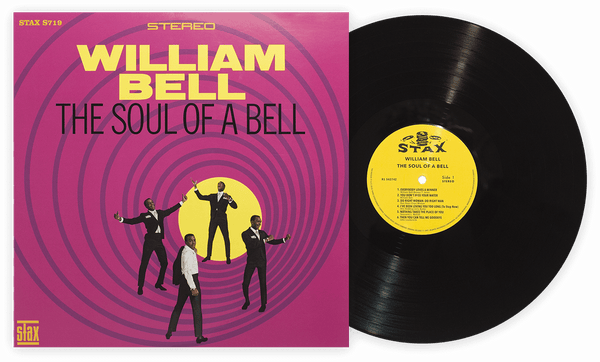Jak David Porter stworzył najlepszy album koncepcyjny soulu
W październiku i listopadzie Vinyl Me, Please wysłało mnie do Atlanty, Memphis i Nashville, aby przeprowadzić wywiady z artystami i pisarzami na potrzeby czwartej edycji podcastu Vinyl Me, Please Anthology, która skupi się na Stax Records. Kiedy tworzyłem swoją listę prośby artystycznych, był jeden artysta, z którym chciałem porozmawiać, ale nie tylko po to, by usłyszeć to, co mógł mi powiedzieć o jednym z albumów w naszym zestawie Stax Records (Hold On I'm Comin' w tym przypadku): David Porter.
Porter was one of the original songwriters at Stax — and it turns out he was sort of also one of their first A&R men, and record producers, before he knew what either of those things were. He got his first notoriety as one half of the Hayes-Porter duo along with Isaac Hayes, when they wrote many hit songs for another duo: Sam & Dave. When Isaac’s solo career took off unexpectedly in 1969 — the Stax brass let him make Hot Buttered Soul basically because they wanted to put out as many albums as possible that year, not because they thought he was a star — Porter was left with no other choice but to become a solo performer, too.
A few years ago, when I was becoming immersed in the Stax catalog as part of my job at VMP, I bought one of Porter’s records on a whim at my local record store: 1970’s Gritty, Groovy, And Gettin’ It. I was blown away, and couldn’t believe what I was hearing: It felt like a lost funk masterpiece, an album of covers that predicted so much of what R&B would become in the late ’70s and early ’80s. I quickly found two more Porter records — 1971’s ...Into a Real Thing, and 1974’s Sweat & Love — and became convinced that he was an unappreciated genius, someone whose solo records were lost talismans of funk and soul.
But his third record, 1973’s Victim Of The Joke...An Opera remained elusive, and I found out that it’s one of the most expensive records in the Stax catalog. A beat up promo copy might be something you can get for around $30, but an O.G. press in pristine condition goes for around $100-$150. And an added complication: Until recently, even hearing the album without a physical copy was difficult. It got added to streaming just in the last year. All you could do a couple years ago was read about the album and sample some of it on YouTube.
What you could read made the head spin though: It was a concept album in 16 parts, an album separated by interstitial dialogue that told the story of a guy… well, I’ll get to that later. It took me 18 months to even find a digital version of the album that was complete to even hear the whole thing; when I finally listened, it was as incredible as I had built it up to be in my mind. It was one of the best Stax albums I’ve ever heard; and it seemed like no one writing any Stax record guide believed the same. I still never saw a physical copy with my own eyes, but resolved to buy it regardless of price if I ever did find one. This was more than three years ago.
In late 2019, Stax announced plans to reissue Victim of the Joke for the first time, which gave me an in: I pitched interviewing Porter about Sam & Dave, but also mentioned that if he just wanted to talk to me about Victim of the Joke, I’d be honored to do so. He said yes to doing the whole interview, and eventually, more than half of our time together was devoted to talking about Victim Of The Joke.
So, I’m in Memphis recording interviews for this season of the podcast (which you can listen to here), and I have some downtime. I decide to head to Shangri-La Records (which is the best record store in Tennessee) and as I’m sitting in the parking lot about to go in, I check my email, and finalize the time and place for my interview the next day with Mr. Porter. Fortuitous timing, since Victim of the Joke was also finally going to be reissued on November 1, the day of our interview, so at least there was a news peg as well.
I’m digging through the crates at Shangri-La, in their special Memphis Music section, when I flip through the Stax Records section, not finding much I don’t have, when I see Porter in his clown outfit. A well-loved copy of Victim of the Joke, staring out back at me. I almost dropped it, I was so excited. I couldn’t believe it. It’s that feeling that keeps most of us going to record stores when Discogs and online retailers exist, I think. I buy the record and go back to my Airbnb, where I discover something crazy inside the sleeve — more on what that was during the interview.
I did my best Nardwuar impersonation during the interview, and pulled the record out as me and Mr. Porter talked about the album. You can buy a new copy of Victim of the Joke from our pals at Craft Recordings now, and below, you can read an interview with David Porter about how this soul concept album masterpiece came to be.
VMP: Let’s talk about your solo career. It happens after Sam & Dave leave and Atlantic pulls out of Stax. You mentioned with Sam & Dave that you were really thinking about their careers as artists. What were you thinking for your own solo career? How were you planning that out when you started making your first solo record on Stax?
David Porter: Well, to be quite honest with you: Isaac Hayes, my writing partner, had had this amazing success with Hot Buttered Soul. His first record was Presenting Isaac Hayes, which he re-recorded “You Don’t Know Like I Know” on that. He had such amazing success and he had it with covers. Not necessarily songs he had written. So my initial thought was that if he and I were not going to be writing many songs together, I was going to be covering songs. Because I had not established a writing relationship, in a comfortable way, with someone else at that particular time on the very first album. My first album was an album called Gritty, Groovy & Gettin’ It; Isaac produced the album, but I had to finish it because he was so busy with his tours, but I wanted to use his name as a producer on the record because, needless to say, it drew value to the record for me and it drew attention for me. Then it got to the point where he was touring so much and so busy that I had to start producing the other albums myself. So I ultimately ended up producing another three albums myself.
I got a young man named Ronnie Williams who’s never gotten the kind of credit he deserves because there was an energy and a flavor of Ronnie’s playing on the keyboard that I thought was fantastic. And that was something I felt was a good combination. And we were able to work quite well on those three albums. We had a lot of fun, but I was also able to establish the identity of [my music] on covers of folks’ material, as well as create some material myself.
Your solo records really feel ahead of the time. I think it’s part of that keyboard sound; it sounds like funk before funk was a real big thing.
You are 100 percent correct, and I give credit to that to Ronnie. Ronnie was able to be inside of his own head in such a way that there was a uniqueness to his playing that worked very, very well on those songs. And like I said, he never got all the credit he deserves, but he deserves a great deal of credit.
So the album I really wanted to talk to you about is Victim of the Joke, because it’s out today, as we’re talking. It’s back out. I was in a record store yesterday, and for the first time ever… (points at record). I’ve been looking for this for like five years, ever since I heard about it, because it wasn’t on streaming services and I was like, “I’ve gotta hear this.” I have your other three solo records, and felt like, “These records are so good, and I can’t believe they’re not in every book as these are the Stax records you need to get,” and then I couldn’t even hear this. Finally tracked down a digital copy, and then yesterday afternoon found this. This album feels like a lost concept album; you were doing this long before anyone else was doing this…
Right.
... concept idea, so when you went into the studio, did you have that idea when you were coming in, or…”
No, actually, I had the idea for Victim of the Joke. After the success and good energy I had after “Hang on Sloopy,” which was on the Into a Real Thing album, my second album. I had a “rap” on that album, which I thought worked really well for me. I also had a rap on “Can’t See You When I Want To” on the first album, which was a song written by Isaac Hayes and I. I wanted to capitalize on the effect and the benefit just from me talking on the records, and even though Isaac was rapping on his records, I was just not going to replicate what Isaac was doing. I thought how can I capitalize on something that’s innate in both of us, but not sound as though I’m trying to replicate what Isaac was doing. So I just thought that I wanted to create scenes — acting scenes — between the songs, and I want to make a story that covers the entire length of the album. I thought in terms of that, and wrote the storyline out; the entire storyline out.
So it’s like a storyboard for an album.
It’s a storyboard. I wrote it totally out, and then I started thinking in terms of what am I going to put inside for the sounds of the situations that are happening in each part of the storyline. So I plotted it out, and it became a natural thing to do. And then I had the challenge of finding things that would give me the kind of sounds that could make it plausible for the record.
It developed a life of its own after I wrote out the storyline of what the album was going to be talking about and how the story would go.
In the jacket of this record I found yesterday, like you said, you were storyboarding it out. Whoever owned this version of this album, actually tried to map out in a storyboard what you were talking about. They are trying to figure out the story.
Wow. That’s amazing!
It’s incredible, right?
So someone was that impressed… wow. Look at that.
Someone was trying to crack what the story is, while they were listening to it.
I want to look at that when we finish this. You shocked me with this. But you know, at the time the record was done, no one even at Stax realized the impact of this record. It became… almost like a cult following. I never got the full impact of what the record was doing until after Stax closed, because everywhere I’d go, people would be talking to me about this record.
In fact, Samuel L. Jackson, who I never thought I’d ever meet. I met Samuel L. when he was making a movie in Memphis, and I thought, “This guy doesn’t know who I am, I know who he is,” and he said to me, “My favorite album is Victim Of The Joke.” And I looked at him like, “What?” He was serious about that. And he’s not the only one.
There was so much emotionally connecting; there are ideas inside the record, like “Pretty Inside,” where you need to respect people for who and what they are rather than make judgements about people. “Storm in the Summertime,” talking about the emotional impact of losing someone, where you go so heavy with that, no matter the season, regardless there’s going to be turmoil inside of you. All of the songs on the record were calculated to marry the storyline that I’d written out initially, and then Ronnie and I started writing songs that was right inline with that.
The very last song on the album is a song called “30 Days.” The girl’s been gone for 30 days, and he’s gone crazy, he’s getting an airplane ride, a bus ticket; the songs really marry to the storyline.
The centerpiece of this album is “I’m Afraid The Masquerade Is Over,” which, as you said, you’re doing covers, but this isn’t like any other version of this song that exists. This is a nine-minute masterpiece that you are blowing out to this huge massive thing.
“The Masquerade is Over” was a song that’s an old song written in about the ’40s. And I liked the song, but I knew I wanted to do something fresh and different with the song. Inside the storyline, I wanted to take “The Masquerade is Over” and make it my own. Make it a version that was identifiable to me. But in doing the song, and making it marry the storyline, I knew that I needed to lengthen it. With the idea that I was going to rap inside of a song, to the love interest that I had inside of the album; I took another song and added it together. That rapping section ended up the most sampled part from this particular record. But the writing credit goes to the people who wrote “The Masquerade is Over.” So it ended up being nine minutes long, but nine minutes of a soulful, really hip kind of song.
I think one of the best ’70s singles on Stax, man. Just incredible. You mentioned a little that this album kind of got a second life when rap producers come along. When did you become aware that it was sampled so, so much?
It started with, that one, with Biggie, and “Who Shot Ya?” And from that, it just became… I don’t know how to explain it. But one of the most looked at sections of a record from anybody. If I start naming everyone who sampled it…
Yeah, it’s Mary J. Blige, RZA has used it on multiple albums.
It’s a great, great feeling that it became such a go-to piece for artists who came after it.
How did the artwork come about for this? The original version it’s this die-cut thing that opens up. In one pic you’re happy on a drum and the inside one you’re sad, which is also sort of the story of the album. You’re pretty happy at the beginning, and at the end, you’re getting out of town sad, right?
Right. I wanted to have a clown outfit for the album. I knew I was going to do that, but I didn’t know how to make it make sense. Larry Shaw at marketing at Stax came up with the horse (on the back). I have to give him credit for coming up with the design concept where it opens up. It really spoke to the thought of the record. There are only two records I’m aware of that Stax went to this length in art design, and it was Black Moses and this one.
So you did one more solo album after this, and haven’t done one since. Why?
The last album that I did (1974’s Sweat and Love), to be quite honest, was never finished. I needed to have gone back and done vocals for it, and correct some things. But Stax was in the middle of turmoil that ultimately culminated in the closing of Stax Records. I didn’t get the opportunity to finish it in the way I’d have wanted, so I let it go the way it went, and I wasn’t happy with that.
But I was extremely pleased with the four albums that I did, even though I wasn’t as happy as I wanted to be with Sweat and Love.
Andrew Winistorfer is Senior Director of Music and Editorial at Vinyl Me, Please, and a writer and editor of their books, 100 Albums You Need in Your Collection and The Best Record Stores in the United States. He’s written Listening Notes for more than 30 VMP releases, co-produced multiple VMP Anthologies, and executive produced the VMP Anthologies The Story of Vanguard, The Story of Willie Nelson, Miles Davis: The Electric Years and The Story of Waylon Jennings. He lives in Saint Paul, Minnesota.
Related Articles
Dołącz do klubu!
Dołącz teraz, począwszy od 44 $Ekskluzywna 15% zniżka dla nauczycieli, uczniów, członków wojska, profesjonalistów w dziedzinie zdrowia & pierwszych ratowników - Zweryfikuj się!








